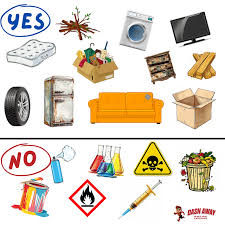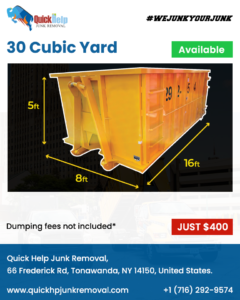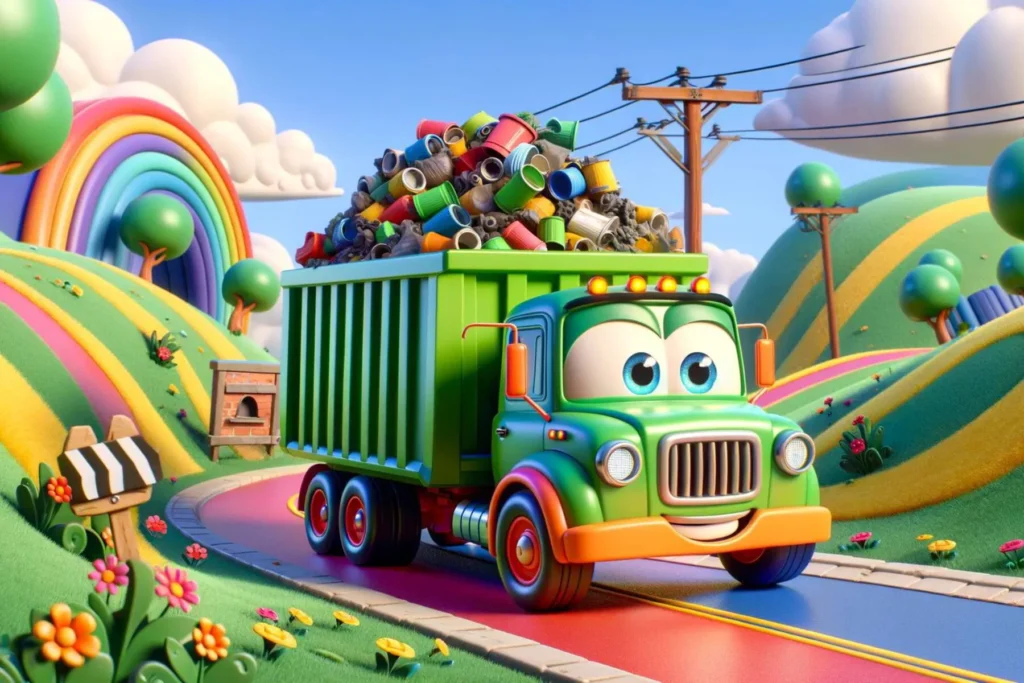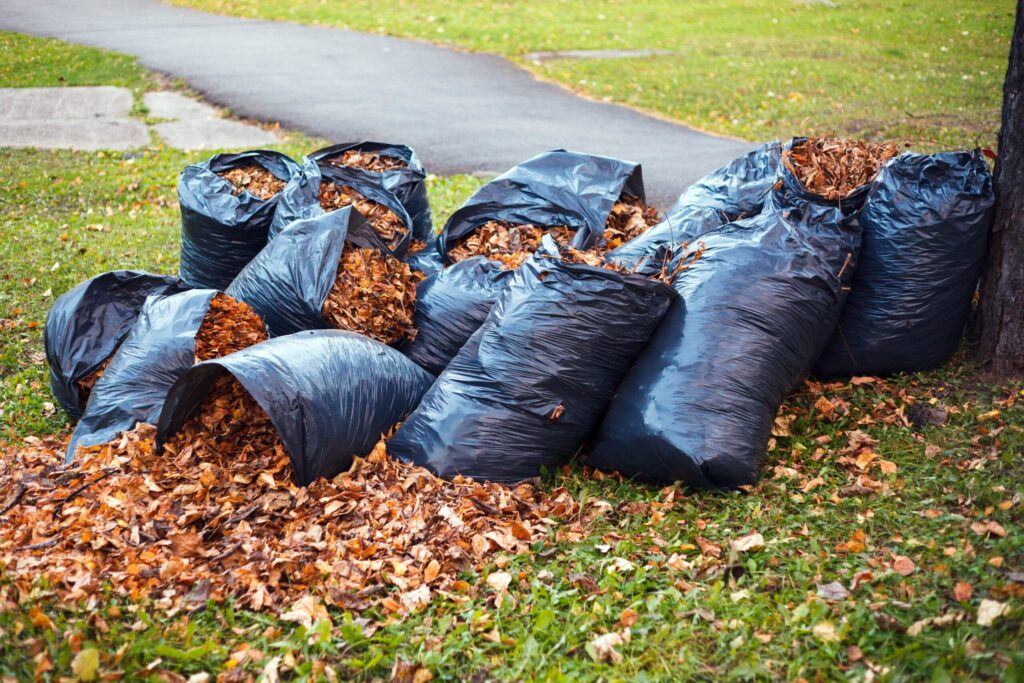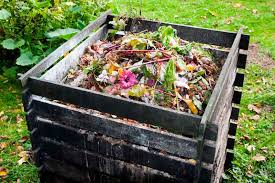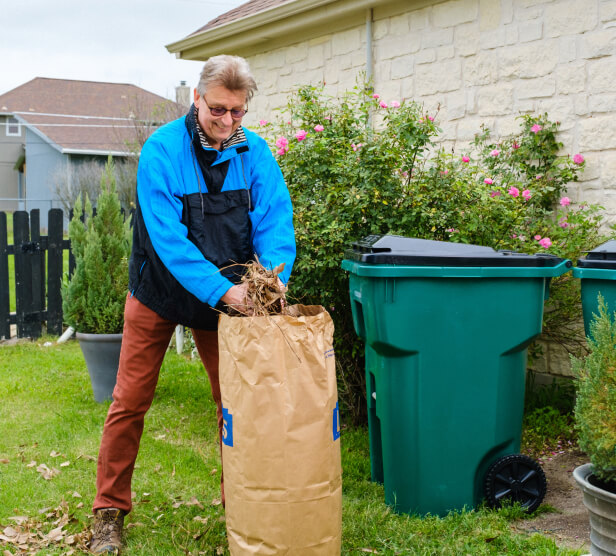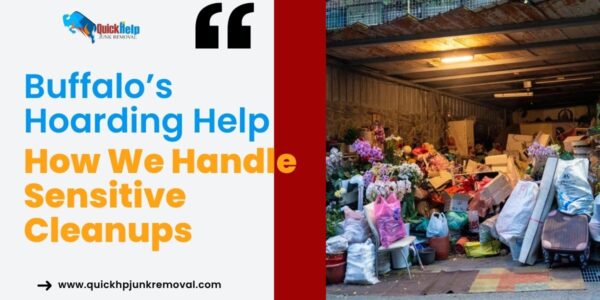Whether you’re tackling a backyard makeover, clearing overgrown shrubs, or replanting your garden, landscaping projects tend to generate a lot of waste. If you’re planning a major outdoor overhaul in Buffalo, you’ve likely considered what to do with all that debris. This is where renting a dumpster can be a game-changer. In this article, we’ll walk you through the best dumpster rental practices for landscaping projects, ensuring you get the most out of your rental and keep your yard looking fresh.
Why Rent a Dumpster for Landscaping Projects?
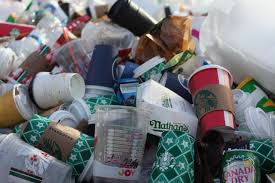
When it comes to landscaping, the debris can pile up quickly—branches, soil, grass, old planters, and more. Renting a dumpster makes the cleanup process more efficient and hassle-free, allowing you to focus on transforming your outdoor space rather than worrying about trips to the dump.
Save Time and Energy
Instead of loading up your car or truck with multiple loads of yard waste and making countless trips to the local landfill, a dumpster allows you to toss everything in one spot. It saves you valuable time, especially for larger projects.
Handle Larger Debris
If you’re dealing with heavy branches, tree stumps, or large amounts of dirt, a dumpster is a must. Some landscaping debris can be bulky and hard to manage on your own. A dumpster can handle all of that, making disposal much easier.
Choosing the Right Dumpster Size for Landscaping
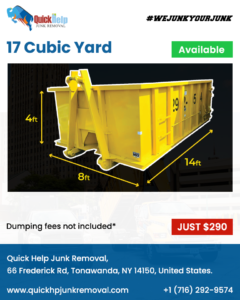
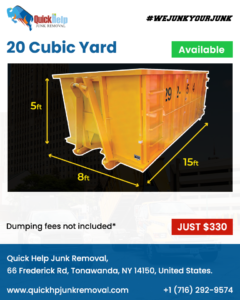
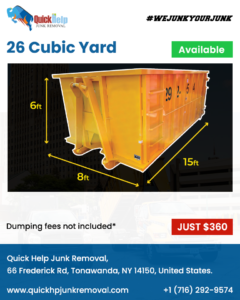
One of the key decisions you’ll make is choosing the right dumpster size. At Quick Help Junk Removal, we offer several sizes to suit your needs, but which one is right for you?
Common Dumpster Sizes for Landscaping Projects
For most landscaping jobs, a 17 or 20 cubic yard dumpster will suffice. However, if you’re doing a complete yard overhaul or dealing with heavy materials like soil and rocks, a larger 26 or 30 cubic yard dumpster may be more appropriate. Here’s a quick breakdown:
- 17 cubic yards: Ideal for smaller projects like garden replanting or minor yard cleanups.
- 20 cubic yards: Perfect for moderate landscaping work, including trimming trees and clearing garden beds.
- 26 cubic yards and up: Great for major landscaping efforts, such as removing a large number of trees or dirt.
Factors to Consider When Selecting a Dumpster Size
- Project scope: The larger your project, the bigger your dumpster should be.
- Type of debris: Soil and rocks take up more space and are heavier than grass clippings or branches.
- Space available: Make sure you have enough room in your driveway or yard to place the dumpster.
Best Practices for Loading a Dumpster
Once you’ve chosen your dumpster, it’s important to load it correctly to avoid any safety issues and make the most of the space.
Separate Different Types of Waste
For better organization and to ensure you’re not wasting space, separate different types of debris. For example, keep branches and twigs together, pile up dirt separately, and avoid mixing in large items like old garden furniture unless necessary.
Avoid Overloading the Dumpster
Every dumpster has a weight limit, and going over it can lead to additional fees or even damage to the rental equipment. Heavy materials like soil can quickly add up, so be mindful of how much you’re putting in.
Break Down Larger Items
If you’re dealing with branches or shrubs, consider cutting them down to smaller pieces. This way, you’ll fit more into the dumpster, saving space and reducing the risk of overfilling.
Know What Can and Cannot Go in the Dumpster
While dumpsters are great for landscaping debris, there are some materials that can’t go inside.
Accepted Landscaping Waste
Most yard debris like grass clippings, branches, leaves, and even dirt are fine to toss in. These materials are often accepted at local recycling centers and can even be turned into mulch.
Prohibited Items
However, certain materials like hazardous chemicals (fertilizers, pesticides), large amounts of concrete, or items like old fencing with nails should not be placed in the dumpster. Always check with your dumpster rental provider to confirm what is acceptable.
How Long Should You Rent a Dumpster for a Landscaping Project?
Figuring out the ideal rental period depends on the scope of your project.
Estimating Your Timeline
For small to mid-sized projects, renting a dumpster for 3-5 days is usually sufficient. For larger projects or those that stretch over a few weekends, you may need a week or more.
Tips for Efficient Use of Your Rental Period
Plan your project timeline in advance so that you can complete the work within the rental window. This will ensure you’re not paying for extra days that you don’t need.
Eco-Friendly Disposal of Landscaping Waste
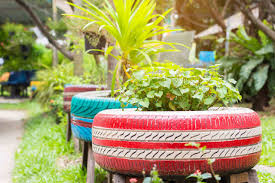
At Quick Help Junk Removal, we prioritize eco-friendly practices. As you load up your dumpster, think about ways you can contribute to green disposal.
Recycling and Composting
Consider separating out yard waste that can be composted or recycled. Many Buffalo residents compost grass clippings and leaves to use as natural fertilizer for their gardens. Additionally, some types of wood and tree trimmings can be recycled.
How We Handle Waste
We aim to recycle and repurpose as much as possible, reducing the amount of waste that ends up in landfills. Whether it’s wood that can be repurposed or organic material that can be composted, we make sure your waste is handled responsibly.
Ready to Rent a Dumpster for Your Landscaping Project?
If you’re ready to tackle your Buffalo landscaping project and need a reliable dumpster rental, Quick Help Junk Removal is here for you. Our dumpsters come in various sizes to fit your project needs, and our team is committed to making the process easy and hassle-free.
Landscaping projects can be overwhelming, but with the right dumpster rental practices, you can simplify the cleanup process and enjoy the transformation of your outdoor space. By choosing the right size, following loading tips, and embracing eco-friendly disposal, you’ll be well on your way to completing your landscaping project in Buffalo with ease.



